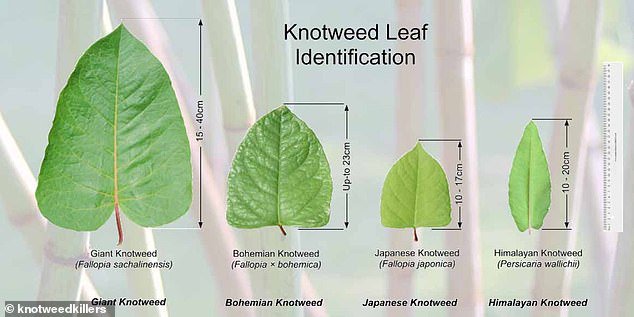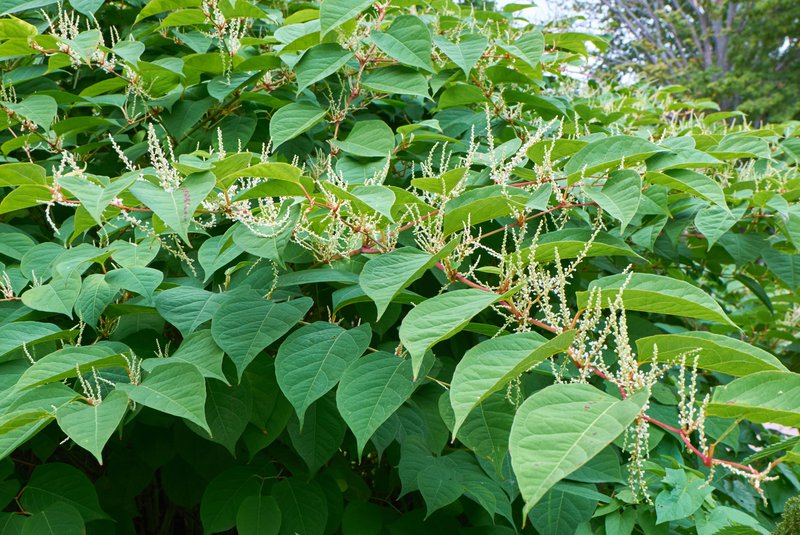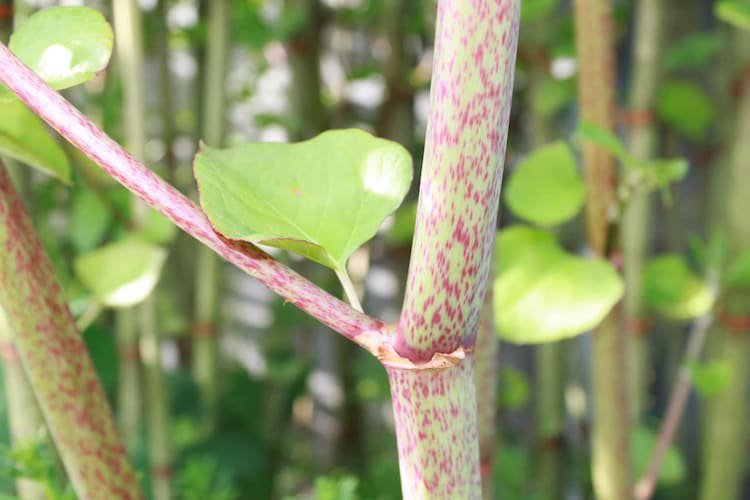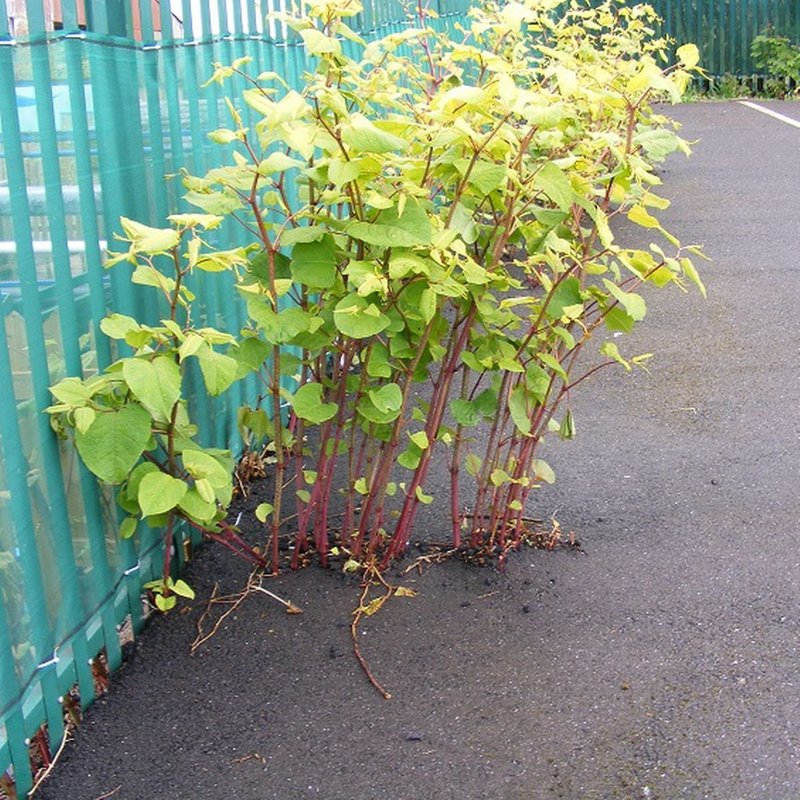Knotweed
Fallopia x bohemica, Fallopia japonica, & Fallopia sachalinensis




Bohemian knotweed is the hybridization of Giant and Japanese knotweeds. They vary slightly in the size and shapes of their leaves and flowers but otherwise look and behave very similarly.
Knotweed - Clumping and spreading perennial hollow zig-zagging stems and long creeping rhizomes.
Leaves: Large leaves are alternate, leathery, and oval. The base is slightly indented to deeply heart-shaped and leaf midveins have hairs.
Flowers: Flower clusters commonly made up of male flowers and located at stem and branch tips. Clusters are around 8 to 13 ¾ inches long. Sepals are white to pinkish white in color. Blooms August - October.
Habitat: Knotweed can grow just about anywhere and is commonly spread by stem and root fragments as a result from vegetation control activities, beaver activity, and flooding. It is particularly prolific in riparian areas.
Weed Classification: B Select
Why is this a Noxious Weed? It forms dense colonies that exclude native vegetation and greatly alter natural ecosystems. Established populations are extremely persistent and colonies are extremely difficult to eradicate. It poses a significant threat to riparian areas, causes erosion issues and is not good habitat for salmon.
In Lewis County, knotweed can be found on a significant portion of the Chehalis, Nisqually and Cowlitz rivers and many of their tributaries. It is important to address knotweed strategically at the uppermost parts of the infested river in order to reduce the chances of reinfestation. Find out more about how we are doing this here.
Control Recommendations:
WA State Noxious Weed Board
UC Davis Weed Report
PNW Pest Management Handbook
King County Noxious Weed Control
